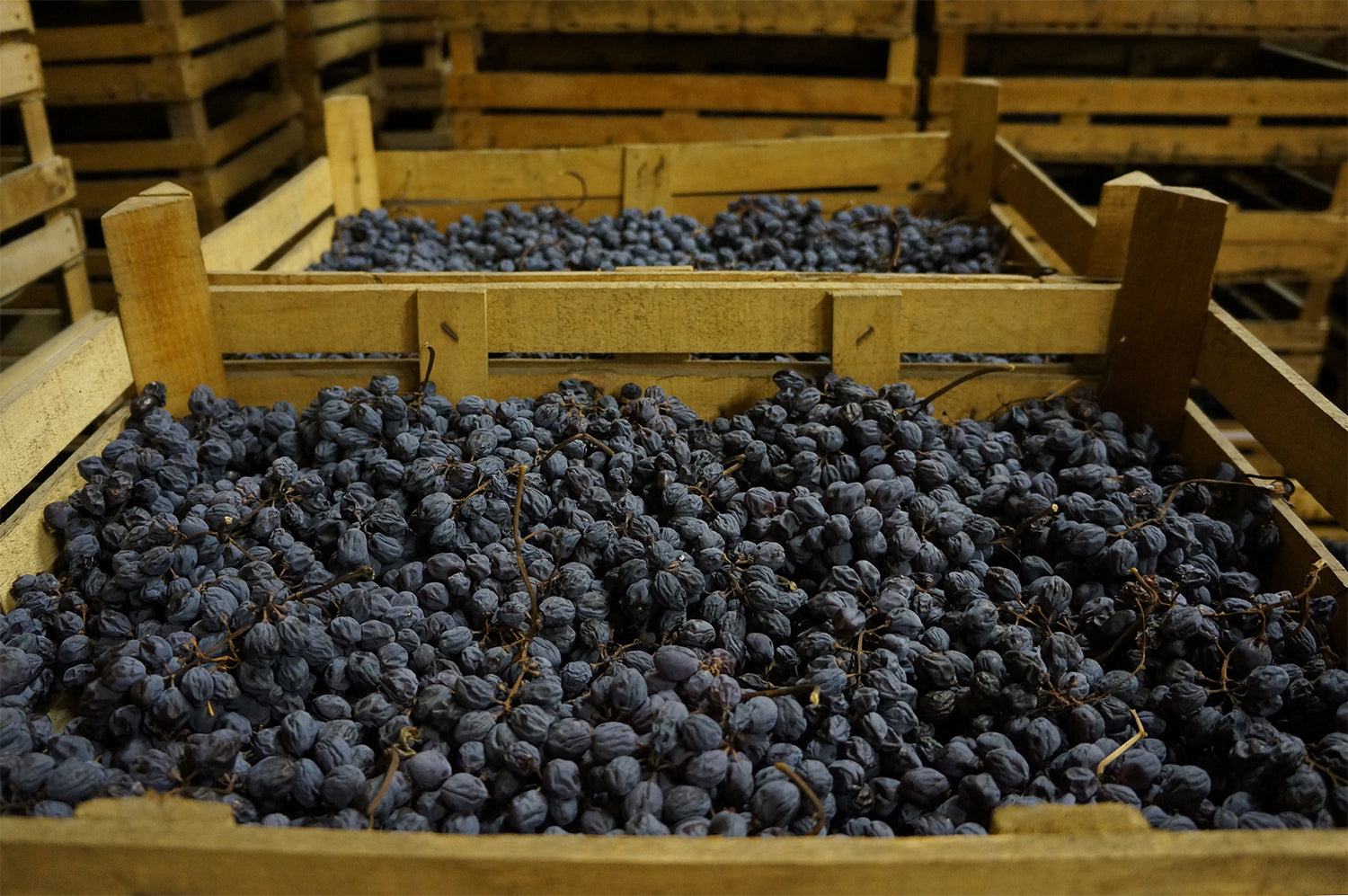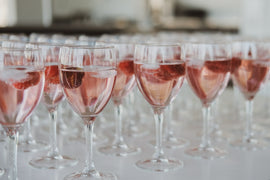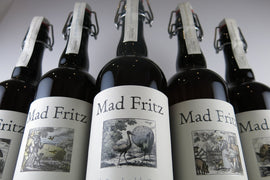VENETO
Wine might not be the first thing you associate with Italy’s Veneto region. That’d likely be Venice, the capital, and one of the most famous places on the planet, endlessly mythologized, celebrated, depicted - in art, literature, photos, film - simulated (the fake version in Vegas), and visited. The city hosts a few million tourists every year, and many don’t venture much further - even though, this being Italy, there’s plenty of other mind blowing stuff nearby. Verona, where Romeo met Juliet, for instance; or Padua, where the Cappella degli Scrovegni houses Giotti’s epochal frescoes. Or the Dolomite Alps and Lake Garda, for breathtaking natural beauty.
It’s a lot to take in. But, this being Italy, you’re also not not thinking about wine, and when you get thirsty, there are a lot of choices, because by one specific metric - volume of vino produced per annum - Veneto is the wine capital of Italy. Though 4th largest in population, and only 8th by size, Veneto produces some 8.8 million hectolitres of wine each year, good for 18% of Italy’s and 3% of the entire world’s annual total. White wine constitutes 80% of the output - sparkling Prosecco and still Soave (made from the Garganega grape) mostly, and most of it decent but not terribly memorable.
The reds, on the other hand, constitute a conurbation almost as distinctive as Venice itself; 240 square kilometers of indigenous grapes and bespoke production methods in the foothills of the Alps gathered under the letters ‘Valpolicella.’ The word itself dates back to the 12th century, is thought to be a mix of ancient Latin and Greek and means “valley of many cellars,” which remains accurate given that the Valpolicella DOC ranks just behind Chianti in terms of red wine production in Italy. Its rules are a little more complicated though. There are five different tiers/styles of Valpolicella: Classico, Classico Superiore, Ripasso, Amarone, and Recioto. All are blends of the same four local varietals - Corvina, Rondinella, Corvinone, and Molinara - which are grown throughout the region (and almost nowhere else); collectively they cover every station of your traditional repast, from aperitivo (Classico) to dolce (Recioto).
Winemaking in Valpolicella dates back to at least the times of the ancient Greeks. The local trademark of using dried out grapes (initially on the vine, but today in well-ventilated rooms) was once known as “the Greek style”; today, it is apotheosized in Amarone del Valpolicella, the most iconic regional bottling whose production process is the starting point for every level of Valpolicella juice. Elsewhere in the world, winemakers generally vinify 2.25 pounds of grapes per bottle produced; each bottle of Amarone requires 23 pounds of grapes that must dehydrate into raisins before vinification truly begins. First, the grapes are selected cluster by cluster over a span of time. Multiple passes are made in the vineyard, during which substandard berries are plucked away one at a time. Healthy clusters are laid to rest on wicker shelves in special drying chambers for the next four or five months. During the drying time, or appassimento, each berry shrinks as its water mass evaporates, the sugars concentrate, and the ratio between skins, seed, and pulp is dramatically altered. Only after the drying process is completed are the grapes destemmed, pressed, and fermented into wine. The result is a full-bodied, bold, and age-worthy wine characterized by smoke and clove aromas, dried fruit notes, firm tannins and high alcohol (15-16%). Dried out grapes that don’t go into Amarone are used in the desert wine Recioto (where fermentation stops before all the sugars are converted into alcohol); the skins and seeds left over from Amarone and Recioto vinification is then added to regular Valpolicella Classico for an extended maceration that results in Valpolicella Ripasso (“repassed” in Italian), which functions like a slightly softer Amarone. Valpolicella Classico comes from the finest terroir in the DOC, just northwest of Verona, and consisting of three vertically-running valleys - Fumane, Marano and Negrar. It is light, fruit forward, and does well with a slight chill. The final category, Classico Superiore, requires at least one year of aging, often in oak, and is fuller than regular Classico, sometimes with hints of the vanilla, smoke clove aromas of Amarone and Ripasso.
For this quarter’s selections we are featuring a Superiore, a Ripasso, and an Amarone; a great cross section of the fascinating and unique region. There’s a wine here for whatever occasion the next few months might present.
Cheers,
The PlumpJack Wine Buying Team
|
Fattori Col de la Bastia DOC Valpolicella Superiore |
|
|
Region / Country of Origin: Veneto, Italy |
About the winemaker: Before taking the helm of his family estate, Antonio studied in Dijon and New Zealand. He gained conviction about how precise vineyard management allows for minimal intervention winemaking. He also realized that high elevation was essential to achieving his vision for elegant, world-class wines—a realization which led to years of re-siting his vineyards to among the highest areas in the appellations. Winemaking Notes: The red grapes in his Valpolicella and Amarone come from Antonio's 12 hectare vineyard called Col de la Bastia, named after the medieval fortresses existing in the area today. The vineyard sits between Val d’Alpone and Val d’Illasi, one of several vine- covered slopes flanked by mountain streams, where shale and clay alternate with limestone. Antonio organically farms his vineyards, all of which are located less than three miles from the winery. 65% Corvina, 15% Corvinone + 10% Rondinella + 10% other varieties fermented in stainless steel vats and aged in oak barrels. Tasting Notes: Fattori Valpolicella is traditional and classic in the Venturini style, with a ruby red color and a bouquet of rose petals, dried cherries and spices without all the oak and fruit that can be found in other Valpolicella. Cranberry, raspberry, cocoa and mint on the palate; zesty and fresh on the finish. |
|
Winemaker: Antonio Fattori |
|
|
Price per bottle / Price per case: $22.99 btl |
|
|
Suggested Food Pairing: Thick braised meats, Portobello mushroom burger, Chicken in mole sauce, Bacon-wrapped dates |
|
|
Massimago Marchesa Mariabella Ripasso Superiore della Valpolicella |
|
|
Region / Country of Origin: Ripasso Superiore della Valpolicella DOC, Veneto, Italy |
About the winemaker: Massimago is derived from the Latin “Maximum Agium” which means the maximum level of well-being. The estate, in the Mezzane Valley in Valpolicella, has been owned by the Cracco family since 1883. In 2003 winemaker Camilla Rossi Chauvenet became the guardian and creator of Massimago. She took over her mother’s vineyards and property and started a winery from scratch. She had studied Agronomy at the University of Padua but in the beginning she had no production facilities and no equipment. Having good land was a blessing but that was no guarantee. At one point, she had to sell the car to afford a tractor. It is only an indomitable will that has brought her to where she is today. In 2008 she turned the property organic and was fully certified by 2014. Today she can proudly look back on the time that has passed because she has become recognized as one of the region's best producers. About the winemaking: Grapes are selected by hand and undergo a prolonged skin maceration in steel tanks. Vinification takes place in steel tanks. After several months, Amarone dried grapes are added to the wine. A second fermentation takes place and the alcohol content rises as does the structure and complexity of the wine. Aging takes place in French barriques and tonneaux for 12 months. Corvina, Corvinone, Rondinella. Certified Organic
Tasting Notes: Color: Bright red ruby Bouquet: Intense notes of fresh cherry, red cherry and red berries. Hints of balsamic, aromatic herbs (thyme, mint). Palate: Red cherries, plum and cloves. Balanced savory and sweet notes with lush, soft tannins. |
|
Winemakers: Camilla Rossi Chauvenet |
|
|
Price per bottle / Price per case: $32.99 btl/ |
|
|
Suggested Food Pairing: White meat, poultry, roasted chicken, veal stew, aged cheeses. Spicy asian cuisine, Iranian stews, American BBQ, cured hams, roasted ham, and sausages. |
|
|
Speri Sant'Urbano Amarone della Valpolicella Classico 2017 |
|
|
Region / Country of Origin: Veneto, Italy |
About the Winery: The Speri Winery, with a story that begins in the first half of the 1800s, has now entered its seventh generation making wine from about 60 hectares of vineyards in the most select Valpolicella Classica areas. The Winery strength has always been, and still is, a matter of teamwork, today engaging three generations – Carlo, Alberto, Giampaolo, Giampietro, Laura, Chiara, Luca and Giuseppe – that manage all stages of production activities, from the vineyard to the bottle. In 2015, after practicing years of sustainable farming, the Winery achieved organic certification for all of the production. About the Winemaking: The grapes are dried for four months, losing 41% of their initial weight. Maceration takes place in steel tanks for 36 days with periodic pumpovers and délesrage. Completion of the alcoholic and malolactic fermentation occurs in 500 liter oak barrels. The wine is then aged two years in Allier oak tonneaux, then another 18 months in Slovanian barrels followed by one year in bottle. 70% Corvina Veronese, 25% Rondinella, 5% Corvinone. Tasting Notes: A deep garnet red in color, it has an ethereal bouquet of dried fruit. On the palate, it is full-bodied, warm, mouth-filling and dry. A substantial wine of rare elegance that lends itself well to aging. “A fresh, lightly exotic nose, offering dates, figs, fresh earth and a hint of toasted coconut. On the palate there’s a fresh, focused bead of ripe and dried fruit, riding equally intense, firm tannins. Long finish. From organically grown grapes. There’s a youthful feel to this. It’s just at the start of a long life. Give it a year or so to settle in. Best from 2023." 93 Points James Suckling |
|
Winemaker: Alberto Speri |
|
|
Price per bottle / Price per case: $68.99/btl |
|
|
Suggested Food Pairing: Excellent with richly flavored main courses based on red meat, such as braised meats and game,and perfect with mature cheeses. It can also be enjoyed on its own at the end of a fine dinner. |
|





